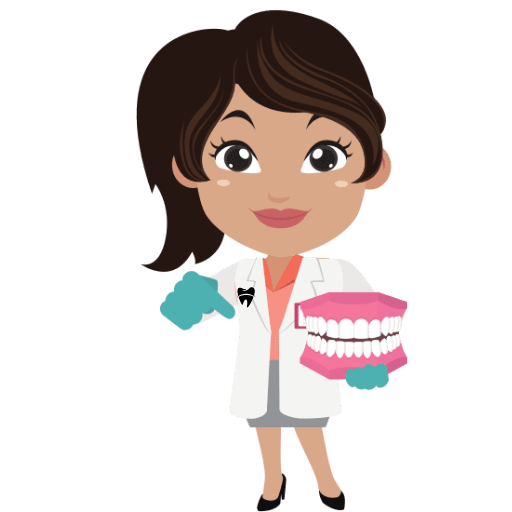Welcome to the dental realm, where we unveil a groundbreaking discovery! Join us as we explore if chewing gum holds the key to easing bruxism, the grinding beast within.
1. Understanding Bruxism: The Unseen Dental Disorder Affecting Millions
Bruxism, commonly known as teeth grinding or clenching, is a widespread dental disorder that silently affects millions of individuals worldwide. This condition often goes unnoticed as its signs and symptoms may not be immediately visible or evident. However, the consequences of bruxism can be detrimental to oral health if left unaddressed.
So, what exactly is bruxism? It refers to the involuntary grinding, gnashing, or clenching of teeth. While occasional teeth grinding is relatively common and harmless, chronic bruxism can lead to various complications. Here’s what you need to know about this unseen dental disorder:
1. Common Causes:
- Anxiety, stress, or tension
- Misaligned teeth or bite
- Side effects of certain medication
- Drinking excessive caffeine or alcohol
- Smoking or using tobacco products
2. Potential Symptoms:
- Headaches or migraines
- Jaw pain or soreness
- Worn, fractured, or sensitive teeth
- Sleep disruption or insomnia
- Earaches or facial pain
3. Treatment Options:
- Custom-made mouthguards
- Stress management techniques
- Behavioral therapy
- Improving sleep habits
- Dental correction for misaligned teeth
If you suspect you may be suffering from bruxism, it is essential to consult a dentist for a proper diagnosis and personalized treatment plan. By understanding and addressing this often unrecognized dental disorder, you can protect your oral health and prevent further complications.
2. The Curious Connection: Unveiling the Link Between Chewing Gum and Bruxism
Bruxism, commonly known as teeth grinding, is a prevalent dental condition affecting millions of people worldwide. While its causes and treatment have long been studied, a recent fascinating connection has emerged: chewing gum seems to have an impact on bruxism. Let’s delve into this curious connection and unveil the link between these two seemingly unrelated activities.
1. A potential stress reliever: Chewing gum has long been recognized as a stress-relieving activity. It can help alleviate tension and promote a sense of relaxation. As stress is often a key factor behind bruxism, researchers have begun to explore whether gum chewing can serve as a natural remedy. Preliminary findings suggest that chewing gum could potentially help reduce the frequency and intensity of teeth grinding episodes by providing an outlet for stress release.
2. Increased saliva production: Chewing gum stimulates saliva production, and this increased saliva flow can have a positive effect on bruxism. Saliva acts as a natural lubricant, reducing friction between the teeth during grinding. Additionally, saliva contains beneficial properties that can protect the tooth enamel and minimize the damage caused by bruxism. Thus, chewing gum may offer a simple yet effective way to mitigate the harmful effects of constant teeth grinding.
While chewing gum shows promise as a potential aid in managing bruxism, it is important to note that further research is needed to fully understand this connection. As with any dental condition, consulting with a healthcare professional is crucial for accurate diagnosis and personalized treatment. Nevertheless, exploring the link between chewing gum and bruxism opens up new avenues for potential treatments and underscores the intricate relationship between oral habits and dental health.
3. Chewing Gum as a Potential Treatment for Bruxism: Examining Dental Discoveries
Chewing gum has long been hailed as a simple pleasure and an effective breath freshener. However, recent dental discoveries suggest that it may also serve as a potential treatment for bruxism, a condition characterized by grinding or clenching of the teeth often during sleep. Here are some key findings that shed light on this interesting phenomenon:
1. Increased Saliva Production: Chewing gum stimulates the salivary glands, leading to increased saliva production. This, in turn, helps to neutralize acid produced by dental plaque and reduces the risk of tooth decay.
2. Muscular Relaxation: Chewing gum exerts a gentle and rhythmic pressure on the jaw muscles, which can help relax them and alleviate the tension associated with bruxism.
3. Diverting Attention: By engaging in the act of chewing gum, individuals with bruxism may be able to divert their attention away from grinding or clenching their teeth. This can help break the habit and reduce the frequency of episodes.
Although further research is needed to fully understand the potential benefits of chewing gum as a treatment for bruxism, these dental discoveries certainly provide intriguing insights into its potential effectiveness. It is important to consult with a dental professional to determine the most suitable treatment approach for individual cases of bruxism.
4. The Science Behind Chewing: How Gum May Help Alleviate Bruxism Symptoms
Chewing gum has long been known as a popular pastime, but did you know that it may also provide relief for those suffering from bruxism? Bruxism, or teeth grinding, is a condition that affects many individuals and can cause various dental problems. In recent years, scientists have delved into the science behind chewing and its potential benefits for alleviating bruxism symptoms.
So how exactly does chewing gum help with bruxism? Let’s take a closer look:
- Muscle relaxation: Chewing gum has been found to relax the jaw muscles, which can be extremely beneficial for bruxism sufferers. By consistently engaging the jaw muscles, gum chewing helps to relieve tension and reduce the urge to grind or clench the teeth.
- Increase in saliva flow: One of the key benefits of chewing gum is the increase in saliva production. This is important because a dry mouth can exacerbate bruxism symptoms. The saliva acts as a natural lubricant, reducing friction and preventing excessive wear and tear on the teeth.
- Distraction technique: Chewing gum provides a distraction that redirects the focus from grinding the teeth. This can be especially useful during times of stress or when bruxism episodes are more likely to occur. By occupying the mouth with gum, individuals may find themselves less inclined to engage in grinding behaviors.
While chewing gum can offer some relief for bruxism symptoms, it is important to note that it is not a standalone treatment. Consulting with a dental professional is essential for a comprehensive evaluation and to explore other potential treatment options. Additionally, not all gum varieties are created equal, so it’s advisable to choose sugar-free options to avoid potential dental issues.
5. Gum Power: Exploring the Mechanisms that Make Chewing Gum Effective for Bruxism
Gum power is known to be effective in managing bruxism, a condition characterized by teeth grinding and clenching. Understanding the mechanisms that make chewing gum effective can provide insights into its use as a potential treatment. Here, we delve into the key factors that contribute to the efficacy of gum in alleviating the symptoms of bruxism.
1. Increased saliva production: Chewing gum stimulates the salivary glands, leading to an increased production of saliva. This increase in saliva helps lubricate the oral cavity, reducing friction between the teeth and preventing excessive wear during grinding.
2. Diverting the force: By providing an alternate object to chew on, gum helps to redirect the force generated during bruxism away from the teeth. The elastic properties of gum allow it to absorb and distribute some of the pressure, thereby reducing the impact on the teeth and jaw joints.
3. Relaxation and stress reduction: Chewing gum has been shown to have a calming effect on individuals, possibly due to the rhythmic motion and repetitive nature of chewing. This can help alleviate the underlying stress and anxiety that may trigger bruxism episodes.
6. Gum Chewing Technique: Maximizing the Benefits for Bruxism Relief
Gum chewing can be an effective technique for relieving bruxism, the condition characterized by teeth grinding and clenching. By following certain approaches, you can maximize the benefits of chewing gum and alleviate the symptoms associated with bruxism. Here are some tips to help you make the most of this technique:
- Choose the right gum: Opt for sugar-free gum to ensure dental health and avoid any potential harm to your teeth.
- Be mindful of your jaw: Pay attention to the movement of your jaw while chewing gum. Avoid excessive pressure and keep your movements gentle.
- Chew strategically: Chew gum for short periods, especially after meals or during stressful situations when bruxism tends to worsen.
- Try different chewing techniques: Experiment with jaw exercises, like opening and closing your mouth slowly, to relieve tension and relax the jaw muscles.
- Combine with relaxation techniques: Use gum chewing as a part of a broader approach to manage bruxism, such as incorporating relaxation exercises, stress reduction techniques, and a well-balanced lifestyle.
Remember, gum chewing is not a one-size-fits-all solution, and personal experimentation may be necessary to find the right technique that provides optimal relief for your bruxism symptoms. Consulting with a healthcare professional is always a wise step to ensure the best approach for your specific situation.
7. Gum vs. Traditional Treatments: Comparing the Effectiveness for Bruxism Management
When it comes to managing bruxism, there are various treatment options to consider, including gum and traditional methods. Let’s take a closer look at how these two approaches stack up in terms of effectiveness.
Gum for Bruxism Management:
- One non-invasive option for bruxism management is chewing gum specifically designed for the condition.
- Specialized bruxism gums are made with a soft texture to cushion the teeth and provide relief for the jaw muscles.
- Chewing gum can help exercise the jaw muscles and potentially reduce the frequency and intensity of teeth grinding.
- Gum can also act as a distraction or stress-reliever, which can be beneficial for individuals whose bruxism is triggered by anxiety or tension.
Traditional Treatments for Bruxism:
- Mouthguards or nightguards are commonly used to protect the teeth from grinding during sleep.
- These custom-fitted oral appliances offer a physical barrier between the upper and lower teeth, preventing them from coming into contact and minimizing damage.
- Orthodontic treatments, such as braces or aligners, can help correct bite issues, which sometimes contribute to bruxism.
- Stress management techniques, relaxation exercises, and counseling are often recommended to address the underlying causes of bruxism.
While both gum and traditional treatments have their merits, it ultimately depends on the individual’s needs and preferences. Consulting with a healthcare professional is crucial to determine the most suitable treatment plan for effective bruxism management.
8. Integrating Chewing Gum into Your Dental Routine: Expert Recommendations
When it comes to maintaining a healthy dental routine, integrating chewing gum can actually be beneficial. However, it’s important to choose the right gum and follow expert recommendations. Here are a few tips to help you make the most of chewing gum for your oral health:
1. Look for sugar-free gum: Opt for sugar-free gum as it helps prevent tooth decay and reduces the risk of cavities. Chewing gum with sugar can actually contribute to dental issues and should be avoided.
2. Choose gum with xylitol: Xylitol is a natural sweetener that has been shown to reduce plaque buildup and inhibit the growth of harmful bacteria in the mouth. Look for gum that contains xylitol to reap these oral health benefits.
3. Chew gum after meals: Chewing gum for about 20 minutes after meals stimulates saliva production, which helps wash away food particles and neutralize acids in the mouth. This can aid in preventing bad breath and maintaining a cleaner mouth.
4. Avoid excessive chewing: While chewing gum can be beneficial, excessive or prolonged chewing can strain the jaw joint and lead to temporomandibular disorder (TMD) symptoms. Stick to moderate chewing to avoid any potential jaw issues.
By incorporating these expert recommendations into your dental routine, you can take advantage of the benefits chewing gum offers for your oral health. Remember to always consult with your dentist for personalized advice based on your specific dental needs.
9. Understanding Limitations: When Chewing Gum Isn’t the Right Solution for Bruxism
While chewing gum can be beneficial for some individuals with bruxism, it is important to recognize its limitations. Bruxism, or teeth grinding, is a condition that affects many people, and finding the right treatment requires a comprehensive approach. Chewing gum alone may not be sufficient to address the underlying causes of bruxism, and alternative solutions should be considered.
Here are a few factors to consider when determining if chewing gum is not the right solution for your bruxism:
- Severity of the condition: Chewing gum may provide temporary relief for mild cases of bruxism. However, if you experience severe grinding or clenching of the teeth, it is crucial to consult with a dental professional to explore more effective treatment options.
- Underlying causes: Bruxism can be caused by various factors, such as stress, misaligned teeth, or sleep disorders. Chewing gum may only address the symptoms temporarily without addressing the root cause. Identifying and addressing these underlying causes is essential for long-term relief.
- Individual differences: Each person’s bruxism experience can vary in terms of severity, patterns, and triggers. Chewing gum effectiveness may depend on individual factors. It is crucial to consult with a dental professional to determine the best treatment plan tailored to your specific needs.
In conclusion, while chewing gum can offer short-term relief for some individuals with bruxism, it is important to understand its limitations. Consulting with a dental professional can help you identify the best treatment options that address the underlying causes of your bruxism and provide long-lasting relief. Remember, there is no one-size-fits-all solution, and finding the right approach is key to managing bruxism effectively.
10. The Future of Bruxism Treatment: Exploring Innovations and Advancements in Gum-Based Therapies
When it comes to the future of bruxism treatment, gum-based therapies are emerging as a promising innovation. Researchers and experts in the field are exploring various advancements in this area to provide more effective and convenient solutions for individuals suffering from teeth grinding and jaw clenching.
One notable advancement in gum-based therapies is the development of specialized chewing gums that help alleviate bruxism symptoms. These gums are infused with ingredients that promote relaxation and reduce muscle tension, ultimately reducing the frequency and intensity of teeth grinding. Some of these ingredients might include:
- Magnesium: Known for its muscle relaxation properties, gum formulations incorporating magnesium have shown great potential in reducing bruxism-related symptoms.
- Lavender oil: This essential oil is known for its calming effects on the nervous system and has been found to effectively reduce stress-related teeth grinding.
- Peppermint extract: With its natural analgesic properties, peppermint extract in gum form can provide relief from jaw discomfort associated with bruxism.
In addition to specialized chewing gums, researchers are also exploring the use of gum-based devices equipped with sensors to detect abnormal muscle activity and provide real-time feedback to users. These devices can help individuals become more aware of their bruxism habits, enabling them to actively work on modifying their behavior.
In conclusion, while chewing gum can provide temporary relief for bruxism, it is not a long-term solution. It may help strengthen jaw muscles but should not replace professional treatment. Consult a dentist for personalized advice tailored to your specific needs. Take care of your dental health!




